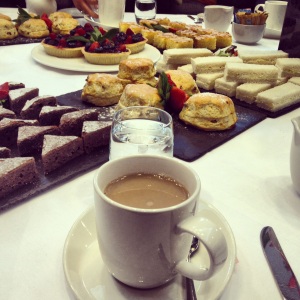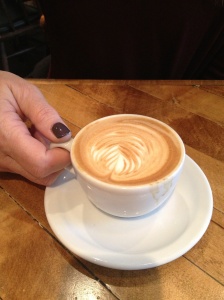Which one would you choose??
America has an obsession with coffee. It’s pretty obvious to the entire world between the stereotypical travel-mug toting corporates and the inquisitive iced latte hipsters. Journey across the Atlantic and you have England, a country that enjoys an occasional tall brew with its frequent Starbuck shops and swanky cafes for the purists, but more than anything, England loves its tea. Working in America, one should learn the ropes to a good cup of Joe, but anyone looking to join the workforce in London must master the art tea.
This quintessential English drink didn’t appear in England until the mid 17th century through Portuguese and Dutch traders. The East India Company did not capitalize on tea’s popularity until the mid-18th century. Ironically, it was the London coffee houses that introduced tea to England. Thomas Garway, the first coffee house merchant to offer tea, sold both liquid and dry tea to the public as early as 1657. By 1750 tea became the favored drink of Britain’s lower classes.
Afternoon tea originated with Anna Russell, 7th Duchess of Bedford. In the early 1800’s, she began to have tea in the late afternoon to bridge the gap between lunch and dinner, even though it was typically served later in the night around 8 o’clock. This soon became known as high tea among the working class, but is a stylish social ritual across the English community today. Afternoon tea is a substantial meal with sandwiches, scones, clotted cream, jam, muffins, cookies, tarts, and cake. However, there is Cream Tea or just normal teatime as well, which is a social outing amongst women for tea and a few scones. Brits generally opt for English Breakfast tea during cream tea.
Today each citizen consumes an estimated 1.9 kg or 65 million cups of tea a year in the United Kingdom. Tea is usually black served with milk (never cream) and occasionally one or two teaspoons of sugar. In addition, tea is much more refined and strict than a simple sit-down for coffee. Milk and sugar may only be added after the tea is poured three quarters of the way to the top. Teacups are not mugs, so do not wrap your fingers through the handle or hold it with both hands, but hold the topside of the handle with the thumb, pointer, and middle finger. If you are sitting, hold the teacup, but if standing, hold onto the saucer with the other hand. Lastly, sip the tea slowly while looking into the cup and after each sip return the teacup to the saucer.
This being said, America is known to drink tea, but it is of a completely different kind. Iced tea, which is most often sweet unless otherwise specified, is an iconic symbol of the South. Appearing alongside a barbeque spread or backyard cookout, it can be purchased like soda in a can or bottle. Around 80% of the tea consumed in America is served cold and this is often shown in warmer weather or lower latitudes.
Whereas, coffee in America is an instant caffeine fix, 66% of the British population consumes tea on a daily basis according to the United Kingdom Tea Council. In America, asking someone out for coffee is a go-to catch phrase to gather up friends, but in England one might frequently hear, “I’ll put the kettle on” if a friend stops by to ask for help, advice, or some company. Some may view it as pride, where others may view it as stubbornness, but these are cultural differences and obsessions that will certainly never fade.



I’m an American but love things Anglo- a proper cup of Earl Gray is often my morning starter!
And I don’t drink coffee. 😉
British tea is good. So is American tea. British tea is prepared in a different way from American tea. BOTH SIDES are ok. They are different, but that is okay. I expect that British tea would taste different. In fact, I’d feel disappointed if it didn’t. That’s why I enjoy cultures other than my own. Human nature is constant but cultural differences (such as how to prepare tea) vary widely. Bravo. Let it be that way
I think that British visitors to America could become enamored of iced tea with fresh lemon ( “the house wine of the South”) especially if it were sun brewed. All they have to understand is that it won’t taste British. This is what I would expect if I traveled in Great Britain in general and England in particular.